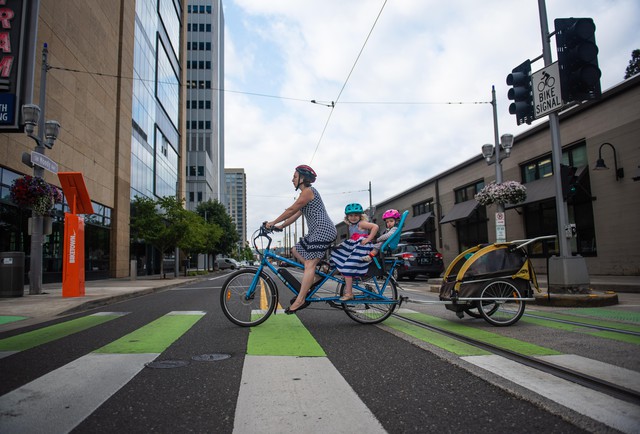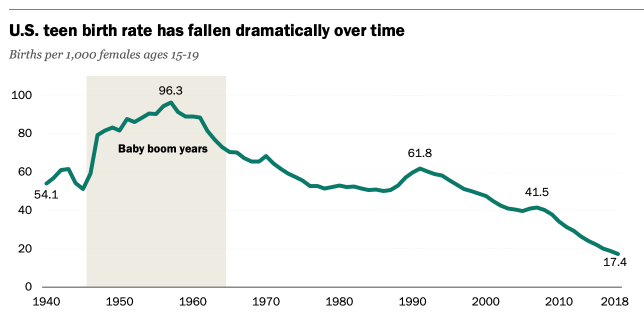What City Observatory did this week
Portland’s food cart pods are dead; long live Portland’s food cart pods. Portland is famous as a foodie town, and one of the city’s claims to fame is having more than 500 food carts, mostly grouped in pods offering a range of different cuisines. One of the oldest and largest of these located in the city’s downtown, around the periphery of a square block surface parking lot, was unceremoniously swept away last month. The city and vendors are scrambling to provide new locations, and some foodies fear that this signals the cart’s demise (their former site will be redeveloped as a tony hotel and condo project.
But we’re much more optimistic about the cart’s futures. Food carts are an intrinsically ephemeral and ever evolving part of the city’s urban fabric. They fill in and activate vacant and under-used spaces, and their presence changes consumer and market perceptions of a neighborhood’s potential. While their former surface parking lot will be redeveloped, there are lots of other places in the city and downtown that will continue to host hundreds of other carts. Like the restaurant business itself, these will morph and change. Accepting and appreciating their temporal limits is better than expecting, or worse yet planning to prevent them ever changing.
Must read
1. Microsoft: Ubiquitous road-pricing is in your future. Microsoft is taking a keen interest in tolling technology, combining satellite data and tracking with cloud computing to pricing every segment of every road everywhere in real time. Microsoft’s chief economist, Michael Schwarz traced out the possibilities in a forum with the International Bridge Tunnel and Turnpike Association.
As we’ve argued at City Observatory, variable road pricing provides travelers with value for money. With congestion charging, Schwarz said, “the cost of tolls will be exactly the same as the value of the time saved. You have given people some of their time back but taken some money from them. Nobody will miss the traffic congestion.”
Schwarz acknowledges the current political resistance to road-pricing, but argues that once a comprehensive congestion charging system is demonstrated at scale in some city (it could be New York), then there will be a tipping point where other cities will see the benefits of adopting such a system:
It will only take one forward-looking or extremely cash-strapped authority to implement congestion charging. Once that happens in one city, everybody else will see the money they are making and the lack of congestion – making it a better place to live. Other will soon follow.
2. Who’s really responsible for gentrification? Homeowners who block new housing. Randy Shaw, author of Generation Priced Out, has a compelling Op-ed at Beyond Chron calling out the real culprits in the gentrification saga. In his view, it’s homeowners, who use their substantial local political clout to block up-zoning and new development, especially of apartments. As Shaw points out, the media regularly cast homeowners as well-intended opponents of change (protecting neighborhood character), while developers are the villains in the gentrification melodrama. This gets things pretty much backwards because blocking increases in housing supply is the real cause of higher rents and displacement. As Shaw says:
Banning apartments from single family home neighborhoods limits new residents to those who can afford to purchase a home. Banning new multi-unit construction also artificially reduces supply, driving up home prices for existing owners. That’s how most San Francisco neighborhoods, and those in other high-housing cost cities, gentrified. It happened with little or no multi-unit construction. Yet homeowners have adeptly shifted blame for the gentrification of urban neighborhoods from their own land use policies to builders—even when no building has occurred.
The naive assumption that blocking new housing construction will keep a neighborhood just as it is, and somehow prevent gentrification, is instead a recipe for even more intense competition for a limited supply of housing, especially existing apartments.
3. The decline of Black middle neighborhoods. Allan Mallach, author of The Divided City, explores the processes of neighborhood change in black neighborhoods in an essay for Shelterforce. He relates data showing the steady erosion of black homeownership in a series of Northeast and Midwest cities. After the bust in housing, the number of mortgages issued to black households has failed to recover, and more importantly, black homebuyers are increasingly buying outside of traditionally black middle neighborhoods. Mallach describes the data for St. Louis:
In 2007, Black homebuyers obtained 801 mortgages to buy homes in the city of St. Louis. Of those, 541, or two-thirds, were for homes in predominately (80 percent or more) African-American neighborhoods, mostly the middle neighborhoods I’m talking about. . . . Ten years later, in 2017, Black homebuyers obtained 281 mortgages in St. Louis. But only 84, or less than one-third, were in predominately African-American neighborhoods.
The paucity of black homebuyers and the evaporating demand for homeownership in black neighborhoods has led to a further erosion of those neighborhoods (as well as driving down home values there). Mallach describes similar patterns in Cleveland and Detroit: black families are increasingly buying homes in suburbs and integrated neighborhoods. While this is driven by, and may accentuate decline of traditionally black neighborhoods, its not surprising:
On the one hand, one can argue that Black homebuyers are making sound, rational decisions for themselves and their families. . . . Many of those suburbs offer (or at least appear to offer) distinct advantages over central city neighborhoods in terms of safety, schools, and public services. For many young Black homebuyers, suburbs may be becoming the default option. . . .By moving to a suburb or a racially-mixed urban neighborhood, a Black homebuyer dramatically increases the odds that their property will appreciate.
4. Micromobility in Portland. The range of small-form, non-automobile modes of urban transportation is morphing right in front of our eyes, with the advent of shared-bicycles, e-scooters, and various models of electric bicycles. With more range, comfort, and convenience, these modes are opening up non-auto transportation to a growing segment of the population. Oregon Public Broadcasting’s Jeff Mapes profiles Annie Rudwick, who uses a electric assist cargo bike for her daily four mile work commute with two small children.

Annie is able to commute by bike not just because of the improved technology, but critically because of Portland’s relatively compact development pattern (she lives in a close-in urban neighborhood, and her medical campus employer is also adjacent to downtown) and because the city has invested in a growing network of bike paths. And economics figures into the decision as well: parking costs about $13 per day at her workplace and her employer, Oregon Health and Science University pays her $1.50 a day to cycle (and throws in free valet bike-parking). Innovation, infrastructure and incentives all have important and mutually reinforcing roles to play in accelerating the micro-mobility revolution.
New Knowledge
The steady and significant decline in teen moms. The Pew Charitable Trusts has a nice chart showing how much progress the nation has made in reducing teen motherhood in the past several decades. Births to teen moms have declined from 96 per 1,000 15-19 year old women in the early 1960s, to just 17.4 per 1,000 in 2018. The decline has been especially strong in the past decade, with the teen birth rate falling by more than half since 2008.
 Teen motherhood is a significant predictor of reduced life chances for children, because younger mothers often lack the resources (and partners) to successfully raise kids. Having kids at an early age is a big challenge for teen moms as well. The Pew report cites a number of reasons for the decline; teens today are less sexually active than their peers of earlier decades, and more likely to use contraception. Both the teen birth rate and the abortion rate have declined over time.
Teen motherhood is a significant predictor of reduced life chances for children, because younger mothers often lack the resources (and partners) to successfully raise kids. Having kids at an early age is a big challenge for teen moms as well. The Pew report cites a number of reasons for the decline; teens today are less sexually active than their peers of earlier decades, and more likely to use contraception. Both the teen birth rate and the abortion rate have declined over time.


